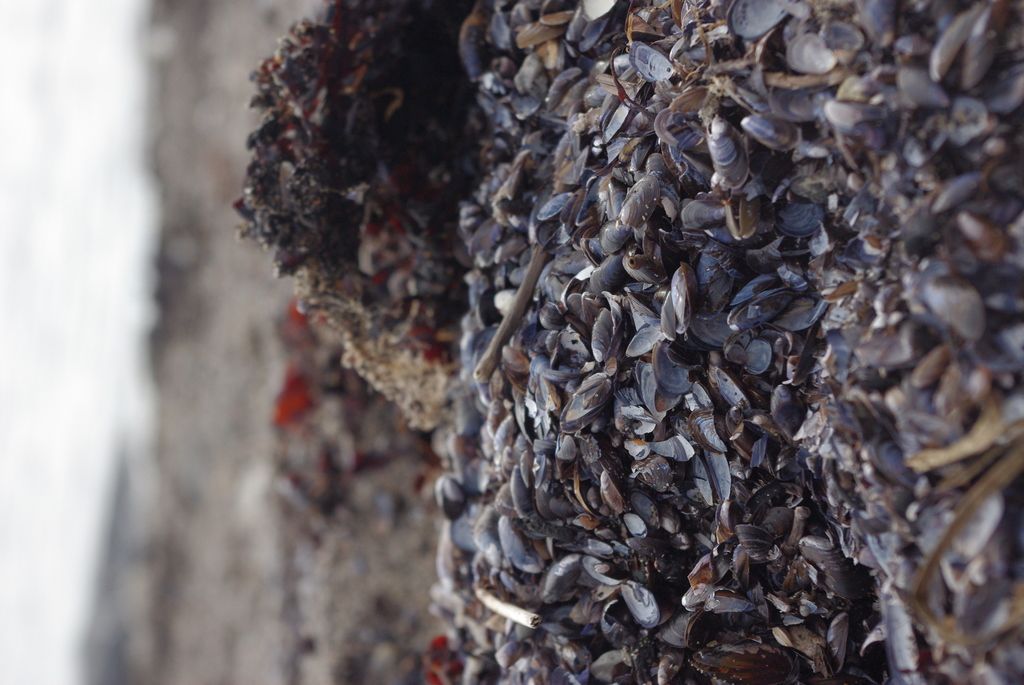The Harvesting of the Grand Mollusk: New York City's Pearl Beds
Laying Claim to New York City's Coastline: The Unsung Hero of the Big Apple - The Oyster
From the crackling energy of the city that never sleeps to the diverse tapestry of people hailing from all corners of the globe, New York City is a living, breathing, pulsating testament to resilience and adaptation. Yet, beneath the chaotic symphony of honking taxis, shouting vendors, and boisterous conversations, there exists an unsung hero. One that mirrors the city's history, grows in its waters, and even had a hand in constructing its buildings - the humble oyster.
New York City's oyster, specifically the Eastern American Oyster (Crassostrea virginica), has ancient roots dating back to the city's indigenous inhabitants and persisting through the eras of the first skyscrapers. This powerhouse of the aquatic realm has protected the city's coastlines, nourished its people, and even played a part in building some of its most iconic structures.
Nutrition powerhouse and superfood, the Eastern American Oyster is packed with high-quality protein, vitamins, minerals, and antioxidants. It's found in the Atlantic waters from Canada to Argentina, and it's none more abundant than in the Big Apple itself.
In the past, the massive oysters of New York could grow up to ten inches long, ten times bigger than their modern counterparts. New York Harbor alone harbored half the world's oyster population, with an estimated 350 square miles of oyster beds covering the harbor's floor. The locals were notorious for their insatiable appetite for oysters, with almost one million oysters consumed daily.
However, as New York expanded and industrialized, the oysters struggled to keep pace. To understand their importance, it's crucial to delve into what they are, the role they play, and why their populations are in decline.
Oysters belong to various families of saltwater mollusks that primarily populate marine or brackish habitats. Some are harvested for consumption, while others produce pearls. Most are consumed, and the Eastern American Oyster is no exception. It's loaded with essential nutrients, including vitamin B12, zinc, and copper. Six oysters can meet and surpass the recommended daily intake of various minerals. Remarkably, a mere two to three oysters provide 69 calories, eight grams of protein, and two grams of fat.
But oysters possess remarkable value beyond their nutritional worth. They are keystone species, critical components of their ecosystem's health. Sometimes referred to as the last stable block in a Jenga tower, oysters filter water, creating a cleaner and clearer environment for diverse marine life. A single oyster can filter up to 50 gallons of water per day, supporting underwater grasses and fostering larger oyster reefs and stable bottom habitats for marine populations.
Without oysters, harmful algal blooms could spread uncontrolled, suffocating aquatic plants, creating hypoxic zones harmful to fish and other creatures, and releasing toxins that contaminate drinking water, posing risks for both humans and animals. In essence, oysters are protectors of the world's oceans.
In New York, oysters enabled the growth of various fish and sea life, serving as natural barriers against storm surges, preventing soil erosion. Despite their size, these diminutive creatures play an outsized role as keystone species, superfoods, and coastline protectors.
As we grasp the significance of oysters, it's easier to comprehend their appeal. The original oyster harvesters were the Lenni Lenape, the indigenous people of Manhattan, who understood the importance of oysters long before European settlers arrived. These early stewards of the oysters left enough space for them to reproduce, creating a sustainable harvest system that lasted for centuries.
The Dutch settlers, initially disappointed that the oysters were not pearl oysters, soon saw their commercial potential. Oysters became a primary source of food for all, fueling the hunger of both the rich and the poor. Oyster bars and pubs sprawled across the city, contributing to the city's status as the oyster capital of the world.
However, the oyster boom came at a cost. Overharvesting, pollution, and the lack of effective waste management wreaked havoc on the once prolific oyster beds around Manhattan. By 1927, the last of New York City's oyster beds were closed due to contamination concerns.
The Clean Water Act of 1972 was a turning point in rehabilitating the oyster beds. Conservation efforts have accelerated recently, with initiatives like the Billion Oyster Project actively working to repopulate the oyster population in New York Harbor by 2035. Influencers like Blue Clarice are raising awareness by creating oyster-themed fashion statements, as exemplified by her tear-drop shaped dress inspired by the oyster's unique shape.
As we strive to restore the oyster to its former glory, we honor the rich history these humble creatures have played in the development of New York City. Join the effort and take part in repopulating the oysters of New York, bringing back the essence of a bygone era and preserving the city's ecological identity for future generations.
References:
- Historical Importance of Eastern American Oysters in New York City
- Conservation Status and Challenges
- Current Conservation Efforts
- Challenges and Future Directions
^1^ - Eastern American Oysters, Crassostrea virginica, have played a significant role in the ecological and economic history of New York City and its surrounding waters. Historically, oysters were abundant in the New York Harbor, supporting a thriving seafood industry. Large oyster farms developed in urban centers like New York City during the 19th century, though they were eventually impacted by pollution and disease.
^2^ - Despite their historical significance, oyster populations in New York City have faced significant challenges. Overfishing, pollution, and disease have severely depleted wild oyster stocks.
^3^ - Restoration efforts have been underway, with notable success in some areas, like the Billion Oyster Project.
^4^ - Challenges persist, including regulations and public perception issues related to oyster harvesting in potentially contaminated waters. Addressing these concerns requires education and policy changes, as well as managing water quality and disease impacts.
The humble Eastern American Oyster, a nutritional powerhouse and superfood, played a crucial role in New York City's history, growth, and even building some of its iconic structures. It's not just a food item – it's a keystone species that filters water, supports underwater grasses, and fosters stable bottom habitats for marine populations.
In the past, New York Harbor had half the world's oyster population, with estimations of 350 square miles of oyster beds covering its floor. However, overharvesting, pollution, and lack of effective waste management led to their decline, with the last oyster beds closing in 1927 due to contamination concerns.
The Clean Water Act of 1972 marked a turning point, and conservation efforts have since gained momentum. Initiatives like the Billion Oyster Project aim to repopulate the oyster population in New York Harbor by 2035, while influencers like Blue Clarice raise awareness through unique fashion statements inspired by the oyster's shape.
A healthy oyster population can enrich the city's food-and-drink scene, contribute to its sustainable-living goals, and reflect the city's commitment to global-cuisines, education-and-self-development, and lifelong-learning. By taking part in repopulating the oysters of New York, we can honor its rich history and preserve its ecological identity for future generations.
As we learn about the importance of oysters, it's essential to recognize their tremendous value beyond their nutritional worth. Their critical role in maintaining clean waters, supporting marine life, and constructing environmentally friendly habitats make them invaluable components of our world's oceans.
From studying environmental-science and climate-change to adopting healthy-cooking practices and home-and-garden tips for sustainable living, the oyster can serve as a beacon of inspiration for a better, more resilient, and adaptive lifestyle – encapsulating the very essence of New York City itself.






